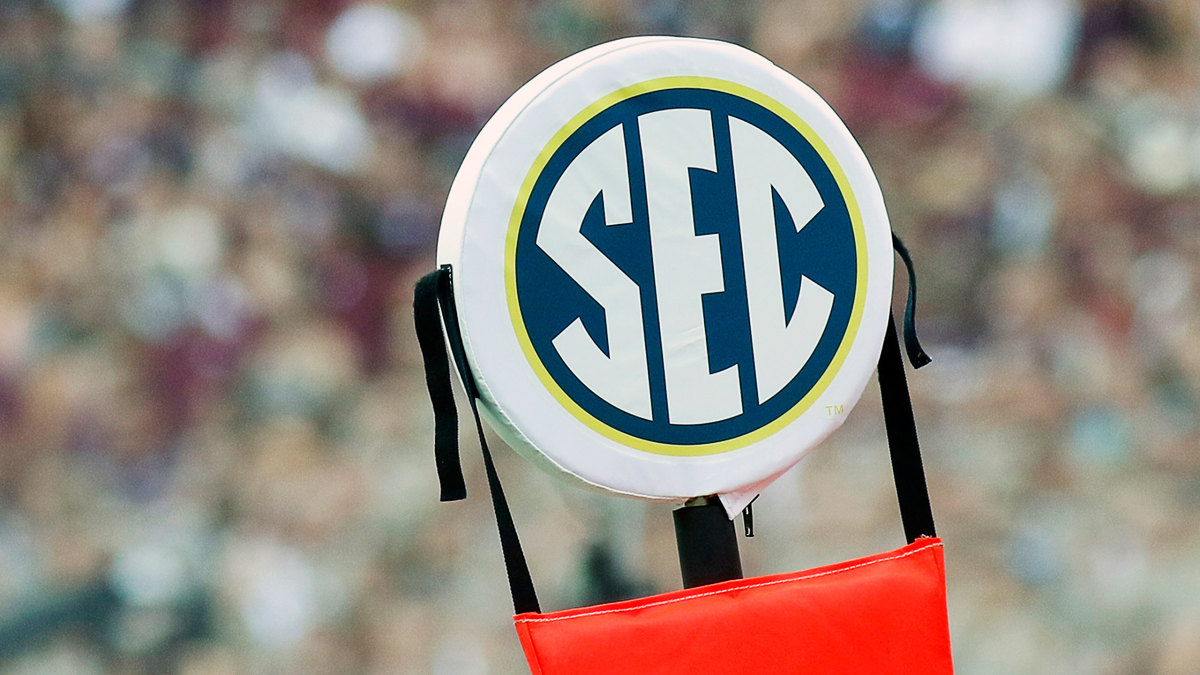To Aid Schools' Financial Losses, SEC Distributes Supplemental Revenue to All 14 Members

Schools in the SEC are getting help from headquarters.
The league has distributed $23 million in supplemental revenue to each of its 14 members in an effort to help offset the financial impact of COVID-19, commissioner Greg Sankey confirmed to Sports Illustrated in an interview this week. The league is financing the distribution of $322 million by accessing future earnings from its multimillion-dollar media rights deal with ESPN that begins in 2024.
The SEC is the only conference to have announced additional distribution to its schools, and the amount is significant. The one-time additional revenue is more than half of the conference’s 2019–20 traditional revenue distribution ($45.5M per school). And still for some programs, the amount is a small portion of the revenue lost during the pandemic.

SEC schools lost an average of $45 million in revenue this past academic year, with some programs losing as much as $70 million, Sankey says. In addition to the lost revenue—much of it from football ticket sales—each SEC school spent at least $2 million on COVID-19 testing.
Like with traditional revenue distribution, SEC programs are free to use the additional revenue how they choose, but the expectation is these funds will be used to support athletes.
“We have focused internally on expectations around the support of student-athletes, including the full range of academic, medical, mental health and nutrition,” Sankey says.
The SEC is securing the supplemental revenue by borrowing from its future media rights earnings in a deal facilitated through Truist Securities, a corporate and investment bank located in Atlanta, and Regions Capital Markets, a division of Regions Bank. In December, the league announced a 10-year, multimillion-dollar contract with ESPN and ABC that begins with the 2024 football season.
The conference will begin repaying the funds in installments starting in 2025 by allocating a portion of the media rights fees. That will last through the “late 2020s,” Sankey says.
The league expects that its annual distribution will still increase starting in 2025 even after the reallocation—a striking fact that only further illustrates the richness of the SEC’s new deal with ESPN. Industry insiders believe the deal is worth more than $300 million, which would add $20 million in additional revenue to each school’s annual distribution.
The supplemental revenue idea has been a long time coming. Since April 2020, league executives began discussing better ways to support schools. The one-time distribution is seen as a way to complement other efforts to mitigate lost revenue, such as staff furloughs and layoffs, shrinking schedules and limiting travel.
“There’s been a lot that has gone into trying to think strategically through what the pandemic meant,” Sankey says. “How do you meet the new cost for COVID testing? How do we think creatively about providing funding through our normal process of revenue distribution and this supplemental opportunity?”
Despite the steep reduction in revenue, some SEC schools haven’t slowed down in the spending department. For instance, four teams in the league fired their head coaches this past cycle, costing those programs what could be a combined $45 million, though much or all of it is from private funds.
“There’s always going to be critics,” Sankey says. “We are in the midst of 15 to 16 months of complete disruption of full economic activity. Yet, through all of this, our programs have functioned well. Yep, people have made decisions about retaining and not retaining coaches. They’ve also supported student-athletes, and I think all of us can be continually thanked for providing those educational and competitive opportunities, and we do so with pride.”
More College Sports Coverage:
• How Many Embarrassments Are Too Many for Louisville?
• The Pac-12 Puts Its Future in Unexpected Hands
• In College Football, the Push for Vaccination Is On
